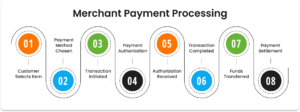The banking industry has changed drastically in the last several years due to new regulations, improved technology, and shifting consumer expectations. A great deal has changed in how individuals handle their money, deal with banks, and even think about money itself.
The Rise of Instant Payments: The FedNow Program
If you want to know what is the FedNow Program? Well it is the Federal Reserve’s new FedNow initiative is revolutionizing the American payment system by providing 24/7 real-time payment services. Businesses and people alike may now transact in real-time, around the clock, thanks to this innovative technology. This service is offering unparalleled ease and speed, completely disrupting the old banking paradigm. Transactions used to take several days to process. Improving companies’ liquidity is a major benefit of the FedNow initiative. Businesses may streamline their cash flow management using immediate payments, which eliminate the delays sometimes seen when using conventional banking methods to pay suppliers, workers, and debtors.
Embracing the Blockchain: The Future of Secure Transactions
By creating a decentralized, public, and unchangeable record of all financial transactions, blockchain technology is causing a sea change in the banking sector. By doing away with middlemen, this decentralized approach speeds up financial transactions while decreasing their costs. Blockchain technology greatly improves the safety and authenticity of financial records by recording transactions in a decentralized ledger that cannot be changed or manipulated. More and more financial institutions are embracing blockchain technology in an effort to simplify processes, increase transparency, and lessen the likelihood of fraud. International money transfers are a major use case for blockchain technology in the financial industry.
The Advent of Open Banking: Unlocking New Financial Opportunities
The revolutionary idea of “open banking” opens up banking data to third-party developers via APIs, encouraging innovation and competition in the financial industry. Regulations like the EU’s PSD2 (Payment Services Directive 2) are driving this endeavor, which seeks to provide more tailored banking services and give users better control over their financial data. More personalized financial goods and services are available to customers when they safely share their financial data with approved third parties. A complete picture of a customer’s financial health may be obtained thanks to open banking’s capacity to consolidate data from several sources onto a single platform.
Digital Banking Revolution: The Shift Towards a Cashless Society
With more and more individuals opting for digital payment methods and cashless transactions, the digital banking revolution is changing the way people handle their accounts. Consumers now have more efficient and easy options to perform financial transactions with the rise of mobile banking applications, digital wallets, and contactless payments. The need for more safety and ease in financial services, together with shifting customer tastes and preferences, is propelling this development. You can do just about anything you need a banking app for, including seeing your account balance, moving money, paying bills, and even monitoring your assets.
The Role of Artificial Intelligence: Enhancing Banking Services
Banks are undergoing a sea change as a result of AI’s revolutionary impact on customer service, operational efficiency, and innovation. Personalized and efficient services are being offered to customers via the integration of chatbots, virtual assistants, and machine learning algorithms driven by artificial intelligence into different banking procedures. Banks can optimize operations and provide a better experience for customers by using these tools to sift through mountains of data, find trends, and make educated judgments. By delivering immediate help and support, chatbots and virtual assistants powered by AI are transforming customer service.
The Evolution of Cybersecurity: Protecting Financial Data
Since cybercriminals and hackers pose ever-greater risks to contemporary financial institutions, cybersecurity has emerged as an essential component of the banking industry’s current environment. Banks have made cybersecurity a major priority due to the increasing number of digital transactions and banking conducted online. This is because banks need strong safeguards to secure their customers’ sensitive financial data and keep their confidence. To protect against cyber attacks and guarantee the security of financial transactions, advanced technologies, including biometrics, multi-factor authentication, and encryption, are being used. An essential part of contemporary cybersecurity, encryption ensures the safe transfer and storage of sensitive information.
Conclusion
New technologies and shifting customer expectations are causing a sea change in the banking business. In order to succeed in the current banking landscape and keep up with these changes, it is essential to be educated. By adapting to these developments, the banking industry may improve the safety and efficacy of financial transactions while also creating new avenues for growth and innovation.
Copyright-free image: banking





Be First to Comment